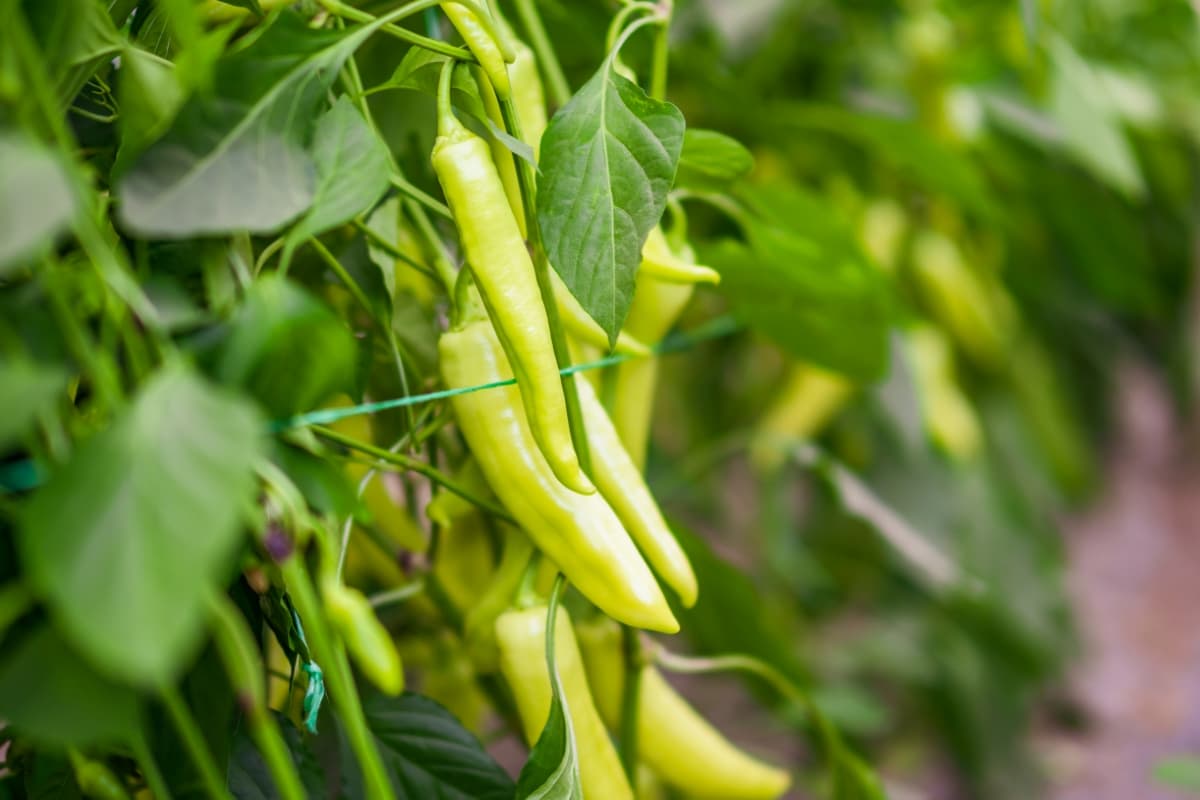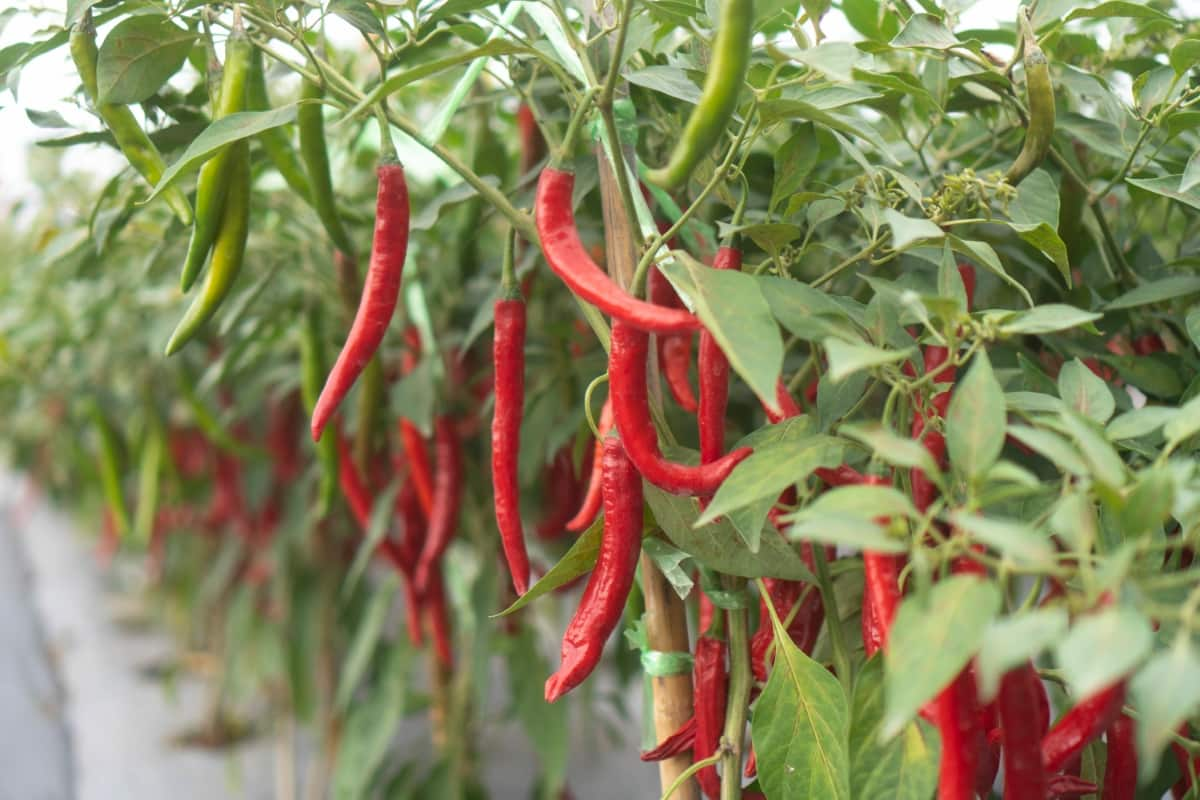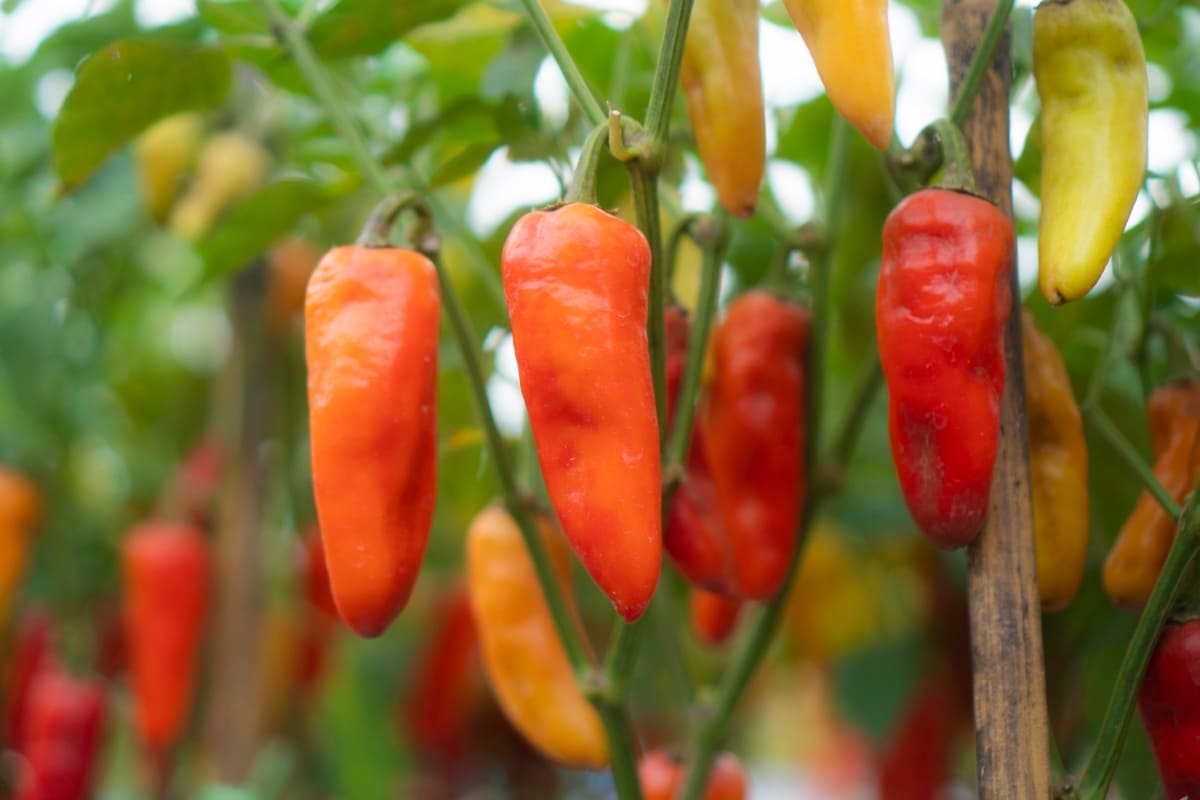Chili fruit rot can hinder a plentiful crop, but naturally treating it is efficient and environmentally friendly. Discover how to use organic treatments to protect your chili crop and how preventive and control work together in this informative guide.

How to Prevent Chilli Fruit Rot Naturally
Identifying Symptoms and Causes of Chilli Fruit Rot
Symptoms of chili fruit rot include black lesions, the formation of mold, and a soft, decomposing texture on the fruit. Fungal infections are the main causes, and overly wet conditions or inadequate airflow around plants frequently make them worse. Phytophthora capsici is one of the fungi that thrives in moist environments and attacks and rots chili plants.
Furthermore, diseases might spread due to contaminated water or soil. Prevention requires early identification. To prevent chili fruit rot and encourage a healthier and more abundant harvest, follow good irrigation techniques, make sure plants are spaced out enough, and use organic fungicides.
Choosing Disease-Resistant Chilli Varieties: A Natural Approach
To prevent chili fruit rot, choose disease-resistant varieties that are suited to your climate and growing conditions. These varieties have natural immunity or tolerance to certain fungal pathogens, making them less likely to get infected or show symptoms of chili fruit rot. Popular varieties include Apache, Cayenne, Habanero, Jalapeno, and Thai.
Apache produces small, hot red fruits that are resistant to verticillium wilt, fusarium wilt, and tobacco mosaic virus. Cayenne produces long, slender red fruits resistant to anthracnose, bacterial spot, and tobacco mosaic virus. Habanero produces orange fruits resistant to phytophthora root rot, bacterial spot, and tobacco mosaic virus.
Soil Management Techniques for Reducing Chilli Fruit Rot
To maintain the health and resilience of your chili plants, it is essential to maintain soil health and quality throughout the growing season. Soil management techniques include mulching with organic materials like straw, grass clippings, leaves, or wood chips to conserve moisture, regulate temperature, prevent weed growth, and add nutrients. Watering your plants deeply but infrequently, preferably in the morning or evening, is crucial to prevent fungal spore spread and infections.
Fertilizing your plants with organic fertilizers like compost tea, fish emulsion, seaweed extract, or worm castings is essential, but avoid over-fertilizing or synthetic fertilizers high in nitrogen. Regular pruning removes diseased, damaged, or dead leaves, stems, or fruits, improving air circulation and light penetration. Dispose of infected plant material away from your garden or burn it.
Companion Planting for Chilli Fruit Rot Prevention
Growing plants together can draw beneficial insects, ward off pests, increase flavor, and strengthen the soil. This technique is known as companion planting. It can help prevent chili fruit rot by creating a balanced ecosystem and reducing the risk of fungal infections and diseases. Some effective companion plants for chilies include basil, garlic, marigold, and oregano, which all have unique benefits.
In case you missed it: How to Use Neem Oil on Pepper Plants: A Natural Way of Getting Rid of Bugs from Chili Pepper Plants

Basil enhances the flavor of chilies and repels aphids, whiteflies, and thrips, which can transmit diseases. Garlic produces a natural fungicide called allicin, which inhibits fungal growth and makes plants more vulnerable to diseases. Marigold attracts beneficial insects like ladybugs and hoverflies, while oregano protects plants from fungal and bacterial diseases and repels pests. Parsley attracts hoverflies, enhances chili flavor, and adds nutrients to the soil.
Natural Pest Control Methods to Combat Chilli Fruit Rot
Pests pose a significant threat to chili plants, causing damage, disease susceptibility, and transmission of pathogens. Natural pest control methods include hand-picking or trapping visible pests, using organic insecticides like neem oil, pyrethrum, or diatomaceous earth, introducing beneficial insects like ladybugs, lacewings, or parasitic wasps to the garden, and using natural deterrents like chili spray, garlic spray, or soap spray.
These methods can be applied every few days or after rain, and follow the label instructions. Introducing beneficial insects like ladybugs, lacewings, or parasitic wasps can also help combat pests.
Beneficial Microorganisms for Organic Chilli Fruit Rot Treatment
Chilli fruit rot can be effectively treated using beneficial microorganisms like bacteria, fungi, or nematodes. These microorganisms can suppress the growth and activity of pathogens that cause the disease. They can be applied to the soil or plants as a spray or drench, colonizing the roots or fruits and creating a protective barrier against infection. Trichoderma, a fungi genus, can parasitize and kill other fungi that cause chili fruit rot, enhancing growth and immunity. Bacillus, a bacterium, can produce antibiotics and enzymes that inhibit fungi growth and stimulate plant growth and resistance.
Nematodes, microscopic worms, can infect and kill insects carrying or spreading fungi that cause chili fruit rot. They can also reduce the population of nematodes, damaging the roots of the chili plants. These microorganisms can be purchased online or from local nurseries.
Organic Fungicides and Biocontrol Agents for Chilli Fruit Rot Prevention
Chilli fruit rot can be effectively prevented using organic fungicides and biocontrol agents. A natural fungicide and pesticide that can stop the growth of fungi and insects is neem oil. It can be applied to plants or fruits to prevent fungal infections or as a soil drench. Trichoderma, a beneficial fungus, can colonize plants and act as biocontrol agents against fungal pathogens.
Bacillus subtilis, a bacterium that produces antibiotics, can inhibit or kill fungal pathogens and stimulate plant growth and immunity. Garlic extract, a natural fungicide made from crushed garlic cloves, contains allicin, which has antifungal and antibacterial properties. It can also repel insects and pests that can damage the plants or spread diseases.
Cultural Practices for Preventing Chilli Fruit Rot Naturally
To prevent chili fruit rot naturally, follow cultural practices such as choosing resistant varieties, rotating crops, spacing plants properly, pruning plants regularly, and mulching plants adequately. These practices help create a healthy environment for chili plants, reduce the risk of infection by fungal pathogens, and improve soil fertility and structure.
In case you missed it: How to Start Chili Pepper Farming in Florida: A Step-by-Step Growing Guide

Rotating crops helps prevent the build-up of soil-borne pathogens while spacing plants allows air circulation and sunlight penetration. Regular pruning of plants and adequate mulching help maintain soil moisture, suppress weeds, and prevent soil splashing. These practices can help ensure a higher yield and quality of chili harvests.
Harvesting and Storage Tips to Minimize Chilli Fruit Rot
To prevent chili fruit rot, harvest and store your chilies properly. Harvest at the right time, ensuring the chilies reach their desired color, size, and flavor, and avoid picking them when they are overripe, underripe, or damaged. Harvest gently and cleanly, using clean tools and avoiding touching them with dirty hands or tools.
To preserve their freshness and avoid spoiling, store the chilies in a cold, dry location away from heat sources and direct sunlight. Proper storage can control temperature and humidity, protect the fruits from pests or pathogens, and help preserve their freshness and quality. By following these tips, you can preserve your chilies’ freshness and extend their shelf life.
Common Mistakes to Avoid when Preventing Chilli Fruit Rot Naturally
Chilli fruit rot is a common issue affecting chili growers, causing the rot, fade, or drop off of fruits. To prevent this, avoid overwatering, crowding plants, using contaminated tools or soil, and ignoring signs of infection. Water plants when the soil feels dry, and use good drainage holes. Space plants 18 inches apart and prune excess branches or leaves.
Use sterile potting mix and rotate crops annually to prevent soil-borne diseases. If infected fruits appear, remove them and spray them with natural fungicides. Forgetting to feed plants is another common mistake. Regularly fertilize plants with organic fertilizers rich in nitrogen, phosphorus, and potassium, and add compost or worm castings to improve soil texture and fertility.
Frequently Asked Questions (FAQ) on Chilli Fruit Rot
What is the Role of Fungi in Causing Chili Fruit Rot?
Fungi, particularly Phytophthora capsici, play a significant role in inducing chili fruit rot, especially in conditions with poor air circulation.
How Can I Identify and Prevent Chili Fruit Rot at An Early Stage?
Early identification involves monitoring for symptoms and implementing preventive measures like proper watering and ensuring adequate plant spacing.
In case you missed it: Chili Production Guide: A Step-By-Step Cultivation Practices

Conclusion
Being aware of the underlying causes of symptoms and taking preventative measures will help you protect your chili crop against rot organically. Implementing organic treatments, appropriate spacing, and thoughtful watering techniques greatly reduces hazards and guarantees a plentiful and healthy crop.
- Feed Your Flock for Less: Top 10 Tips to Save on Chicken Feed
- Ultimate Guide to Ossabaw Island Hog: Breeding, Raising, Diet, and Care
- Hatching Answers: The Top 10 Reasons Your Chickens Aren’t Laying Eggs
- Eggs and Economics: Breaking Down the Cost of Raising Backyard Chickens
- Defend Your Greens: Proven Methods to Keep Iguanas Out of Your Garden
- Ultimate Guide to Cinnamon Queen Chicken: A Comprehensive Guide for Beginners
- Ultimate Guide to California Tan Chicken: Breeding, Raising, Diet, Egg-Production and Care
- Ultimate Guide to Marsh Daisy Chicken: Breeding, Raising, Diet, and Care
- 10 Types of Chicken Farming Businesses You Can Start for Profits